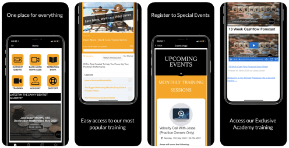How often do you really pay attention to what other people are saying? Our social media news feeds are swarming with people filling us in on their lives, but the moment you open the app, you get busy posting your own updates. You may scroll through the feed, like a picture, comment a customary compliment and then move on without giving it a second thought.
Even in your day to day lives, you may ask your kids how their day was, but then you move on to heating up dinner or setting the plates while your kids fill you in. How much of it do you really remember? What were they trying to convey to you. Was it a happy day or a sad day for them? Do they feel insecure or hurt? Do they need a little more validation that particular day on how talented and amazing they are? You wouldn’t know because you aren’t really listening.
It is only when you pay attention to what your team members are bringing to the table, their enthusiasm and reservations can you truly move onwards and upwards. And this is particularly true for dentists; arguably deep listening is one of the most important skills, apart from the obvious clinical techniques that a dentist can have.
What is Deep Listening?
The biggest misconception about deep listening is that many think that it is a characteristic rather than a skill. People are not just ‘good listeners;’ they become good at it through practice and conscious effort. So how do you become a really good or deep listener?
By listening to all that is unsaid.
You truly listen to someone when you understand all the thoughts that are running through their head but fail to make it to out of their lips. From a person’s body language to the tone of their voice, to their silence and even the gleam in their eyes, they all convey messages that require skills to recognise and understand.
In a dental practice context, we put our hands in someone’s mouth, which is a very personal thing. It may not seem like a big deal to you, as a dentist, because you do it all day, but it’s usually something quite uncomfortable for your patients, so you need to make sure you understand what they are saying, even if they the words are unsaid.
By allowing them to open up to you, share their stories and their concerns, you get a better understanding of your patients needs and wants, fears and apprehensions and hence can provide better care.
The Science of Listening
We spend on average, about 55% of our day listening. Our work as health professionals in dentistry requires a lot of interactions with patients so you could spend up to 80% of the day listening. According to research, the biggest barrier to listening is not focusing on the speaker.
On average we speak about 125 words a minute, up to 200 if you are auctioning cattle. You can listen to up to 400 words a minute. So immediately, you are programmed to be distracted. You fill 300 words in while you are waiting for the speaker’s speed to catch up with the speed at which your brain can process it. The speaker is equally frustrated because they can think at 900 words a minute but can only get 125 out of their mouth. So the chances are they are only saying 11% of what’s going on in their head, which means there is a good chance that what they truly intend to say is not being conveyed.
Five Levels of Listening
Do you see your patients getting all fidgety when you talk about the process of a root canal? Do they look nervous? What can you do to make them more comfortable? The chances are you do notice all these things but don’t pay much attention to them because you have a list of other needs to heed to, and your job is to fix their teeth, not their apprehensions. And these are exactly the kind of values and thoughts that can be coming in the way of not getting enough repeat patients or referrals. Just going the extra mile can really help in understanding your patients and serving them better.
There are five levels of deep listening. Only by practicing all these five levels can you truly understand what is being said. Most people just get stuck on the first two, which is why they miss out on deeper listening.
Level 1: Listen to Yourself
Before you can focus on what the rest of the world is saying, you need to be aware of your own voice. If your mind is preoccupied with your own thoughts, like the grocery list or a phone call with your mother then there are chances you won’t be an attentive recipient.
Level 2: Listen to the Content
The content not only consists of what comes out of a person’s mouth, it includes a person’s body language, their energy, and their visuals.
Level 3: Listen to the Context
The context is the rest of the 775 words that failed to make it to their lips. Those are the things that you really need to focus on.
Level 4: Listen to the Unsaid
Listen to the meaning. This requires some level of interpretation. Not just what you are presented with, but what’s the backstory? Why did they actually come to you? Is there something that they want to say but are not able to convey properly? By asking them questions, you can really understand what they are saying?
Ask short questions; as a rule anything more than five words means you are letting your judgment get in the way. So questions like ‘what do you think?’ or ‘how can we do this?’ or ‘How can you help?’ or ‘Is there anything else?’ allows them to truly open up to you and provide solutions.
Level 5: Listen for Meaning
Meaning is the true purpose of a person coming in to speak to you. A patient may have they come to you to get their teeth polished or is it because they have an event coming up and they want to look their best? If you take the time out to find the meaning, you would get the opportunity to guide them through the right process, help them get the procedure done prior to their big event, or meet their true goals more accurately.
Tips for Deep Listening
- Remove all other distractions. Like your gadgets or devices, your journals, the newspaper etc.
- Keep the brain hydrated. The brain consumes 26% of the blood sugars of the body with only 5% of the body mass. So it is a very hungry organ when it comes to the physical requirements. And we place a very high cognitive load on the mind when it comes to listening because we haven’t been taught how to do it. Drink a glass of water before going into a team meeting or taking an important phone call and between appointments.
- Breathe with mindfulness. Deep breathing provides the mind with much needed oxygen. Take about five deep breaths before going into your listening sessions, because the deeper you breathe, the deeper you listen.
Truly listening to the people that we are interacting with is fundamentally important and can make all the difference in how we serve them. By practicing the five levels of listening outlined here today, you can truly break the barriers of miscommunication and lead more effectively.
P.S. Whenever you’re ready …. here are 4 ways I can help you grow your dental practice:
- Grab a free chapter from my book “Retention – How to Plug the #1 Profit Leak in Your Dental Practice”
The book is the definitive guide to patient retention and how to use internal marketing to grow your practice – Click Here
2. Join the Savvy Dentist community and connect with dentists who are scaling their practice too
It’s our Facebook group where clever dentists learn to become commercially smart so that they have more patients, more profit and less stress. – Click Here
3. Attend a Practice Max Intensive live event
Our 2 day immersive events provide access to the latest entrepreneurial thinking and actionable strategies to drive your practice forward. You’ll leave with a game plan to take your results to the next level. If you’d like to join us, just send me a message with the word “Event and I’ll get you all the details! – Click here
4. Work with me and my team privately
If you’d like to work directly with me and my team to take your profit from 6 figures to 7 figures …. just send me a message with the word “Private”… tell me a little about your practice and what you would like to work on together, and I’ll get you all the details! – Click here



